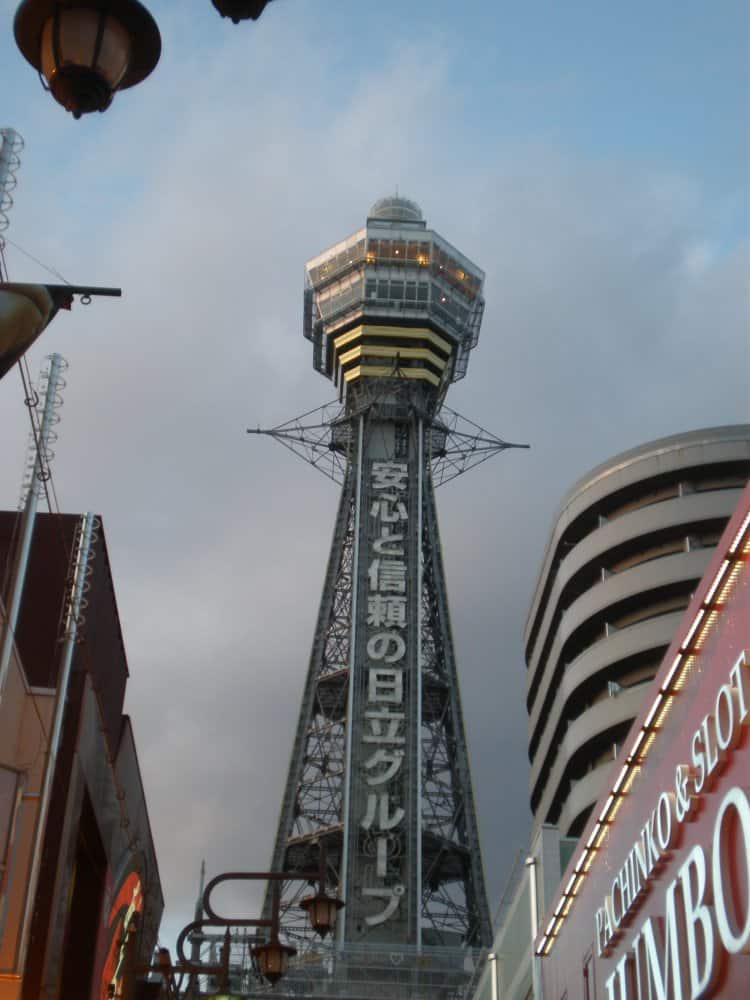Osaka
Population: 2,709,167
Telephone Area Code: 06
Surface area: 225.21 Km2
Osaka is the second largest city in Japan and is the vibrant commercial centre of the Kansai region. It has a truly ancient history as a thriving city which has seen the birth and development of the merchant class with their culture and the representations thereof, such as the Kabuki theatre, for which Osaka is still an important centre.
As with Tokyo’s Haneda, Osaka has its own airport, Itami, which is now predominantly geared towards domestic flights.
Kansai Airport has been built between Osaka and Nara, and has become a large international hub which connects the city with the rest of the world and which, amongst other things, was designed by the Italian architect, Renzo Piano.
For those who are travelling by train, it is likely that they will disembark at Umeda or at shin –Umeda if they are travelling on the high-speed train.
An excellent bus network also connects the city to other parts of the country.
The main bus station is in the central district of Nanba, but many of the buses also come in to Umeda as well.
What to see in Osaka
Whilst Kyoto and Nara end up dominating most of the tourist attention for those who are visiting Kansai, Osaka is a city that also has much to offer in many different respects.
Moving around the city of Osaka is relatively easy.
In addition to the Metro system which has 7 lines, there is also a service known as the Kanjo sen (literally meaning “Circle Line), which is an over-ground train like the Yamanote in Tokyo and which travels the circumference of the city covering the main locations within the metropolitan area.
It is also possible to reach most of the main places of interest quite easily by using the “Circle Line.”
Shitennoji
This complex of 4 temples was commissioned by Shotoku Taishi at the end of the struggle for power with the Soga faction emerging victorious and the relative victory of Buddhism which saw the religion’s official introduction to Japan.
The Empress Suiko, before she become the Empress, nominated Prince Shotoku, her nephew, as regent and gave him her daughter’s hand in marriage.
Shotoku Taishi is a person of great importance in Japanese history and is closely identified with the initial phase of Chinese influence in Japan. He was the first to provide written laws based on Confucian and Buddhist principles, he brought about innovation throughout the country and started the tradition of sending monks and scions of the aristocratic families to China to study.
The pagoda and the gardens inside the complex are quite remarkable.
Every Sunday there is an interesting antiques market where second-hand goods are also on sale.
Osaka Castle
This building commission was undertaken by Toyotomi Hideyoshi, who was, probably, the most notable inhabitant of Osaka in Japanese history.
Hideyoshi, who was of humble origins, enjoyed a spectacularly meteoric military career and became one of the highest ranging generals under Nobunaga, the unifier of Japan.
When the latter was killed in an ambush, he succeeded him as Lord of Japan and moved the seat of government to Osaka.
The beauty and grandeur of the castle that he had built is one of the very best examples of this type of architecture.
Surrounded by a large park, it is also one of the most important destinations for viewing the displays of cherry blossom in spring time – as well as the plum blossoms at the beginning of March.
The castle was destroyed and subsequently rebuilt by Tokugawa Ieyasu who, upon the death of Hideyoshi, changed from being an ally to the enemy of his heirs and marched on Kansai.
This became the most important civil war in Japan which saw the country divided in two between the supporters of the Tokugawa and those who gave their backing to the son of Hideyoshi, Hidenori.
In the end, Tokukawa Ieyasu was the victor in the battle of Sekigahara and the epicentre of power in the country was definitively moved to Kanto.
This was also the origin of the profound and still unresolved rivalry between Osaka (and Kansai in the broader sense) and Tokyo.
Minpaku (the National Museum of Ethnology)
This was built to commemorate the International Expo which took place in Osaka in 1970. The enormous building that houses the Museum of Ethnology is located towards the north of the city in the area that was built specially to house this great event.
It is one of the most interesting ethnological museums in the world with a vast range of displays as well as being an important research institute.
Visiting the museum will take you on a journey through different world cultures with particular emphasis on the folkloric but it is not solely focussed on this subject.
The library and the museum’s collection of documents also have a wealth of artefacts on display.
This is somewhere that is unmissable for those who are lovers of anthropology as well as for those who are just generally interested in learning new things.
Nanba
Is the vibrant city centre. It is the commercial sector as well as being the meeting point for the city’s young people.
You should also ensure that you don’t miss out on the opportunity to enjoy the views from Dotonburi Bridge which is in the heart of the Nanba district and which is where you can see the illuminated signs for the “runner” of the sweets and ice-cream company, “Glico,” which has become one of the most famous icons of Osaka.
There is also the huge crab which belongs to the Kani Doraku restaurant and is now one of Nanba’s main attractions.
The Osaka Aquarium (Kaiyukan)
Amongst the city’s other attractions, the Aquarium certainly merits a visit. There is an interesting variety of fish along with the whale sharks that are a symbol of the Aquarium itself.

